Aakash Odedra, a british dancer, has teamed up with the Ars Electronica Futurelab to create a dancing performance including all sorts of technological adds such as tracking, visualizations, projections and more. During his visit in April, when he came to Linz together with his choreographer Lewis Major, there was some time to talk about the project which is centered on dyslexia.
Aakash Odedra, Lewis Major, Roland Aigner and Florian Berger
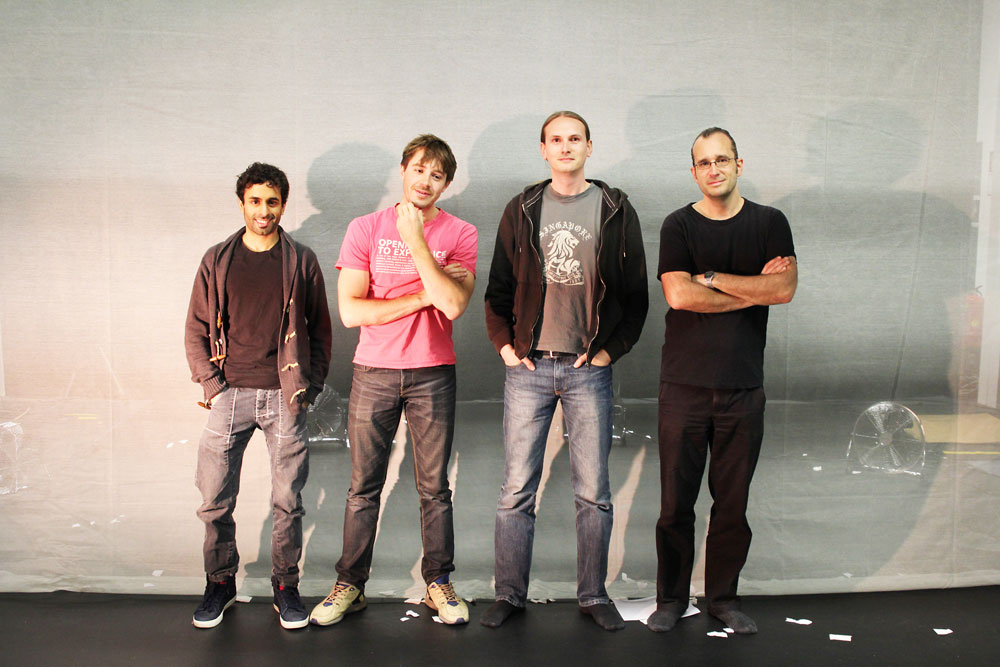
How did this project come about, where was the start of it?
Aakash: I think initially the project started because I wanted to create something that was closer to home for me, in terms of experiences and what I grew up with. For me, dyslexia was a very big disadvantage and in the end, it turned out to be a very big advantage because of my lack of interest in education, because of the education-system in England. It sort of pushed me into the odds more. I suppose my only way of expressing myself, which I found was more natural to me, was through creativity, through dance.
So I thought it would be interesting to combine the subject of dyslexia and dance, and also the misinterpretations that go with it, the humor, etc. So it would be good to combine it with Lewis Major, who is the co-creator of this and see what we could do.
One thing which struck me was the artistic creativity of Ars Electronica, being an organization which does research and development. I thought it would be really interesting to combine technology and dance.
As there is one thing happening a lot these days is that there’s less of an audience going to the theatre to watch a production, they rather sit on their PSP or whatever it is at home and play games. So how can you combine something which is appealing to people from all walks of life.
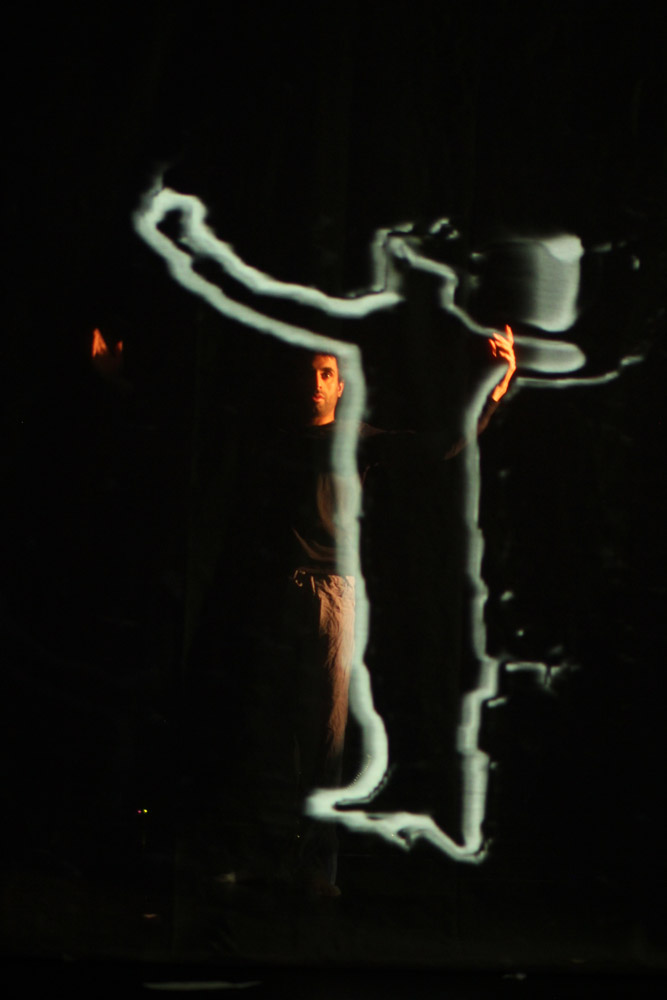
Lewis: I think originally the cooperation happened through Klaus Obermaier, who was presenting Apparation at the Dublin Dance Festival in 2012. We organized a trip to Linz for the festival 2012 and we checked out what Ars Electronica could do and how it could fit into what we were up to.
Aakash: We were quite inspired by the museum. It was interesting because there were a lot of ideas we had when we came over here and we ended up having discussions. We were bouncing off each other’s creativity and the ideas sort of started to snowball and increase. We came up with possible possibilities of what we could do. The frame of mind we had was that we’re not going to eliminate any ideas until we tested and tried them which was the basis for the future, to test something, see if it works.
And I think that most of the ideas we’ve tried were pretty successful.
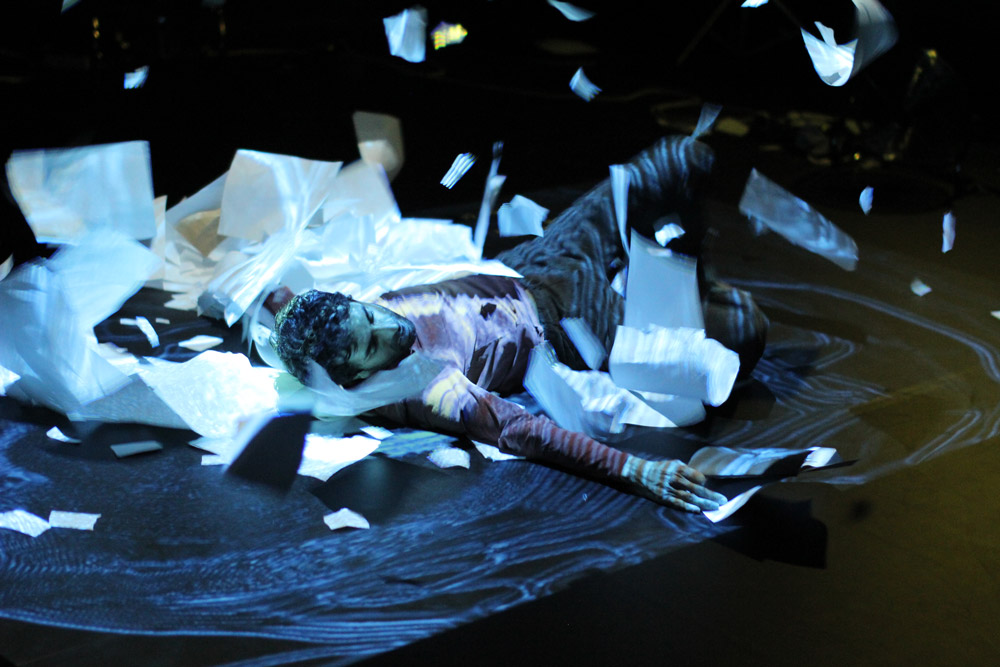
Lewis: We had some pretty crazy ideas.
Aakash: Yeah. We wanted to have something 3d, but something that is around you, to be physically present in the space. We went with the idea of a fog-machine so I could walk through this sheet of fog, which is there, but the logistics and practical side of it didn’t allow us to go with it, but we tried it. We drove to Prague, we saw the machine, tested it, which all led us to try out other things, the paper storm for example, this whole idea of having objects around you in their simplest form came about.
So you are looking for interaction with your surroundings? You are using digital and analog technologies, what sort of things can we expect?
Lewis: We originally started just thinking about the digital medium, the stereoscopic projections, along with the light motion. Somewhere along the way we got side-tracked into those analogue ideas, with the fans, with the falling paper, the paper-shooter we got rigged up there, they all just got combined with the digital side of things. Whereas I don’t think we haven’t thought so much about what could be a set idea. But they integrate very well with the dance and the digital side of things.
Aakash: It’s almost like two oppositions are coming together. I think through the research and the development, and again through the process of elimination, you know, the fog-screen didn’t work for us, so we thought: Ok, how can we show something in it’s simplest form, so we came up with this paper falling. We were just playing around in the studio, we worked on various forms of falling paper, but the the question came up: How can we make this paper fall? So the machine was created.
Then the question was, how we could actually get the paper to move, so the idea of a storm was created, so we implemented the fans, then again, how can we control the speed of the wind blowing from the fans? So now it’s hooked up via DMX-cables.
Lewis: The great thing about this collaboration is that we just keep asking questions and the Ars Electronica is coming up with amazing answers that we would never even consider.
Aakash: So that’s the interesting part, bouncing off each other’s creativity, going back and forth and increase from that. Often we start out with a completely different idea than what we end up with.
Lewis: Ars Electronica never said no, no matter how crazy the idea was, and they always push through to come up with a solution. That’s great.
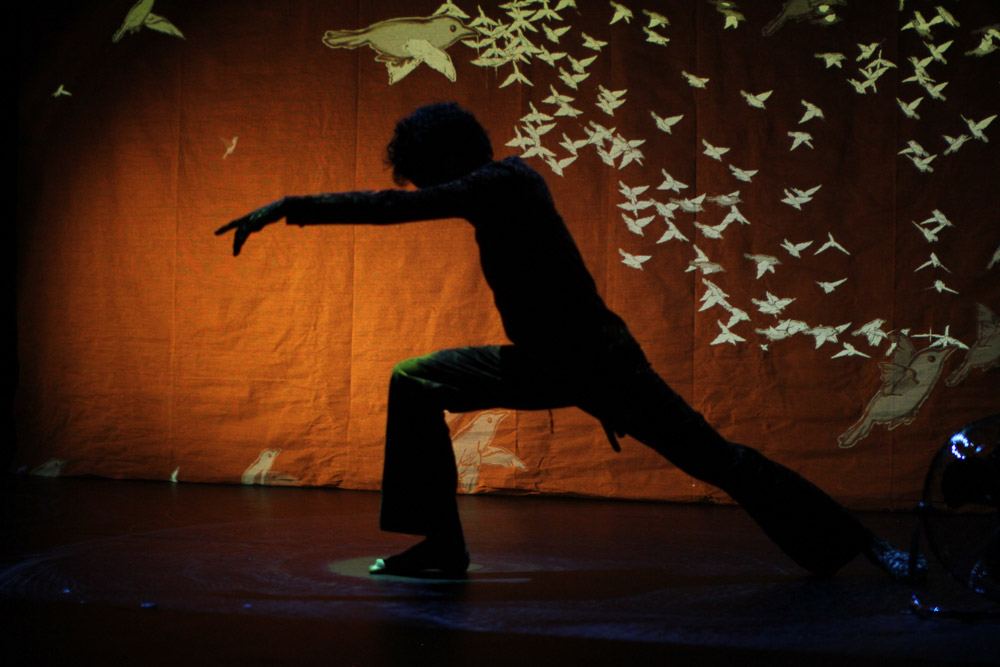
How does the technology influence the dance, or vice versa?
Aakash: We went in with a very open mind. The dance-part, if we would do pure dance, you know, something we can do on our own, that’s always something we can do. But when we are in this environment, we really want to absorb it, so it starts to become a real collaboration. I would say it’s 50:50 from both sides, because it is the interaction which is the main thing, in this stage of the project.
But of course we improvise within the structure, and sometimes we find that only the dance works, or it might work with less technology, but we try to keep it 50:50.
Lewis: It’s a very interesting process. The technology moves quite fast, and it’s very easy to change the parameters of what works, so we actually don’t have that much time to develop routines. There has been a lot of improvisation, but mostly out of necessity, almost.
One of the big stumbling blocks we came across was that Aakash and me didn’t have as much time to develop movement in depth, which we would usually do, because the technology has been here, it would not be wise not to use it and to concentrate on the dance only.
Aakash: It’s a discovery of how to work within this frame of technology. A lot of the times we are improvising to see where the scope is, where it can go.
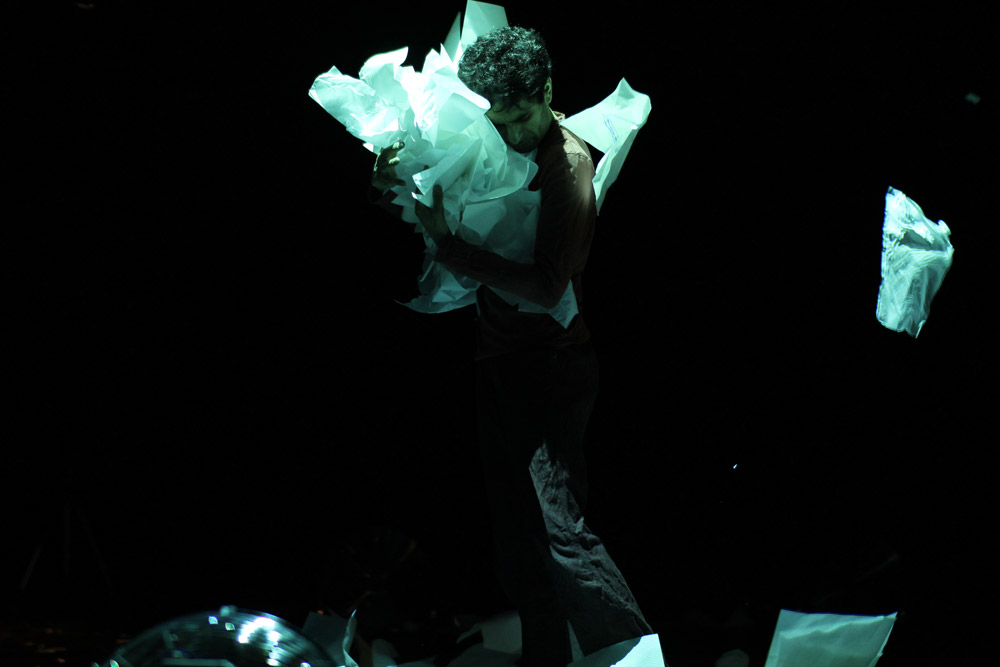
Lewis: I has a lot to do with the conceptual idea of the piece and where it might go. Obviously there’s the visual element and what that can be to get the ideas across we originally started with. We are making a show about Aakash’s experiences with dyslexia and everything has to come back to this, it can’t just be eye candy.
Aakash: What’s interesting as well for me personally is that all those things are coming back to me, of course it started with my experiences, but it doesn’t end with them. People should be able to feel dyslexia, they should be able to relate to it, in it’s simplicity.
Lewis: We always talk about the human element.
What are your next steps?
Lewis: We need another R&D-phase (smiles). It’s going to be a very long one. We want to make something that is really touching, really human, it’s going to take a lot more research and a lot more discovery, before we can even start with the creating process, rehearsals and the performance.
Aakash: So it’s still quite some way to go.
Lewis: I was just thinking, we only really had five or six days in the studio, that’s enough to get a taste of what might be.
Aakash: It’s been split up, so we did three days, had a break, came back. But what we eventually have to do is to find out what draws to the essence of the subject and then take from that and really focus on each section and filter out the unnecessary parts. This is going to take a lot of interaction between us and Ars Electronica.
So you are filling up your palette now?
Lewis: Yeah. We have a forest of ideas and have to wiggle it down to a toothpick.
What this toothpick is going to look like and where the project is heading will be topic of up-coming blog-posts about this very promising project.